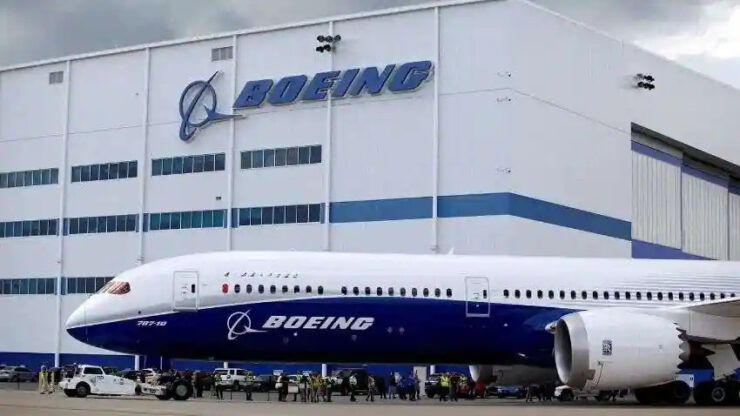
HYDERABAD, India. Boeing today shared projections for South Asia’s commercial aviation sector over the next 20 years, with the region leading the world in yearly passenger traffic growth. The company shared its annual South Asia and India Commercial Market Outlook (CMO) at Wings India 2022, anticipating resilient long-term demand for commercial airplanes and services following the COVID-19 pandemic.
South Asia’s air travel sector is dominated by the Indian market, which accounts for about 90% of the region’s passenger traffic. India’s continued economic growth and its expanding middle class will fuel demand across South Asia for 2,400 new commercial jets valued at nearly $375 billion during the 20-year forecast period, according to Boeing.
 Single-aisle airplanes will increase their share of total airplane demand to serve India’s vast domestic market and competitive regional market, which includes established carriers as well as start-up airlines. To improve and expand long-haul connectivity – especially routes from India to North America and Europe – carriers will continue to invest in versatile, fuel-efficient widebody airplanes.
Single-aisle airplanes will increase their share of total airplane demand to serve India’s vast domestic market and competitive regional market, which includes established carriers as well as start-up airlines. To improve and expand long-haul connectivity – especially routes from India to North America and Europe – carriers will continue to invest in versatile, fuel-efficient widebody airplanes.
“We project robust demand for air travel in South Asia with carriers increasing services, and passengers feeling confident about travel to see family and friends and do business, as well as from air cargo,” said Dave Schulte, managing director, regional marketing, Boeing Commercial Airplanes. “Key elements that will promote continued growth in the region will be the competitive domestic market and opportunities in international routes, both backed by government policies to reduce airline cost and taxes,” added Schulte.
 Salil Gupte, President, Boeing India, said, “India continues to develop as one of the world’s largest civil aviation markets as it ramps up its capabilities and capacity in infrastructure and services. At Boeing, we are committed to support this growth through our Make in India supplier partnerships, next-generation products and solutions, technologies and services, to advance the future of commercial aviation.”
Salil Gupte, President, Boeing India, said, “India continues to develop as one of the world’s largest civil aviation markets as it ramps up its capabilities and capacity in infrastructure and services. At Boeing, we are committed to support this growth through our Make in India supplier partnerships, next-generation products and solutions, technologies and services, to advance the future of commercial aviation.”
Other insights from Boeing’s CMO forecast through 2040 include:
- Indian operators will need just over 2,000 new single-aisle airplanes to meet demand during the forecast period. Single-aisle airplanes such as the 737 family will continue to serve growth in domestic and regional markets, including flights from India to the Middle East and Asia Pacific regions.
- Indian carriers will need 240 new widebody airplanes such as the 787 Dreamliner to meet long-haul demand.
- India’s air cargo growth is expected to average 6.3% annually, driven by the country’s manufacturing and e-commerce sectors, including its Make in India initiative. Boeing forecasts demand for more than 75 freighters, including 10 widebodies and 737 Boeing Converted Freighters.
- India’s civil aviation industry will require close to 100,000 new pilots, technicians and cabin crew personnel, with an increasing number of women pursuing aviation careers.














